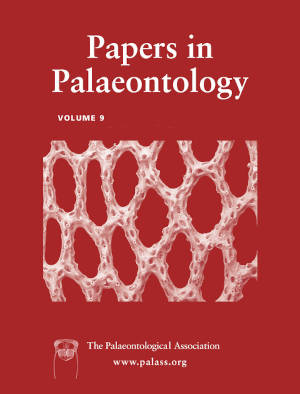Article: Putative hydroid symbionts recorded by bioclaustrations in fossil molluscan shells: a revision and reinterpretation of the cecidogenus Rodocanalis
Publication: Papers in Palaeontology
Volume:
9
Part:
2
Publication Date:
2023
Article number:
e1484
Author(s):
Max Wisshak, Simon Schneider, Radek Mikuláš, Sebastián Richiano, Fran Ramil, and Mark A. Wilson
DOI:
10.1002/spp2.1484
Abstract
Abstract The fossil record yields a peculiar phenomenon in different kinds of molluscan shells: bioclaustrations formed around (epi)symbionts during growth of the hosts' shell margin. Four morphologies, two of them formerly considered bioerosion traces, are here united in the parataxonomy of bioclaustration structures under the revised cecidogenus Rodocanalis. These are: (1) simple linear grooves (Rodocanalis linearis csp. nov.) formed below the periostracum in Pleistocene to Recent endobenthic bivalves; (2) series of distally ramifying grooves (Rodocanalis runicus) in Silurian orthoconic nautiloids; (3) irregular networks of grooves (Rodocanalis reticulatus) in Jurassic to Cretaceous bivalves and gastropods; and (4) regular reticulate networks (Rodocanalis geometricus csp. nov.) in Jurassic to Cretaceous gastropods. The linear grooves might be associated with commensal worms, while multiple lines of reasoning point towards hydrozoan symbionts in the case of the branched and anastomosing grooves. After the hydrozoan larva settles and the first polyp becomes fixed on the calcareous ostracum at the shell margin, the process of bioclaustration commences when the periostracum surrounds the base of the polyp, which moves towards the external shell surface, while the hydrorhizae develop in the only possible direction: towards the shell growth margin. This enables new polyps to originate at the shell edge by budding, while the bioclaustration of the stolonial hydrorhizae advances. We consider the nature of this symbiotic relationship as mutualism, with the hydrozoan symbiont taking advantage of the host's feeding current or food debris, and the molluscan host profiting from the defensive capability of the hydrozoan's cnidocysts.
